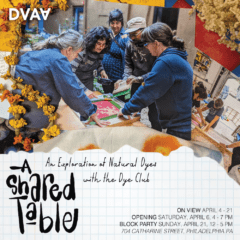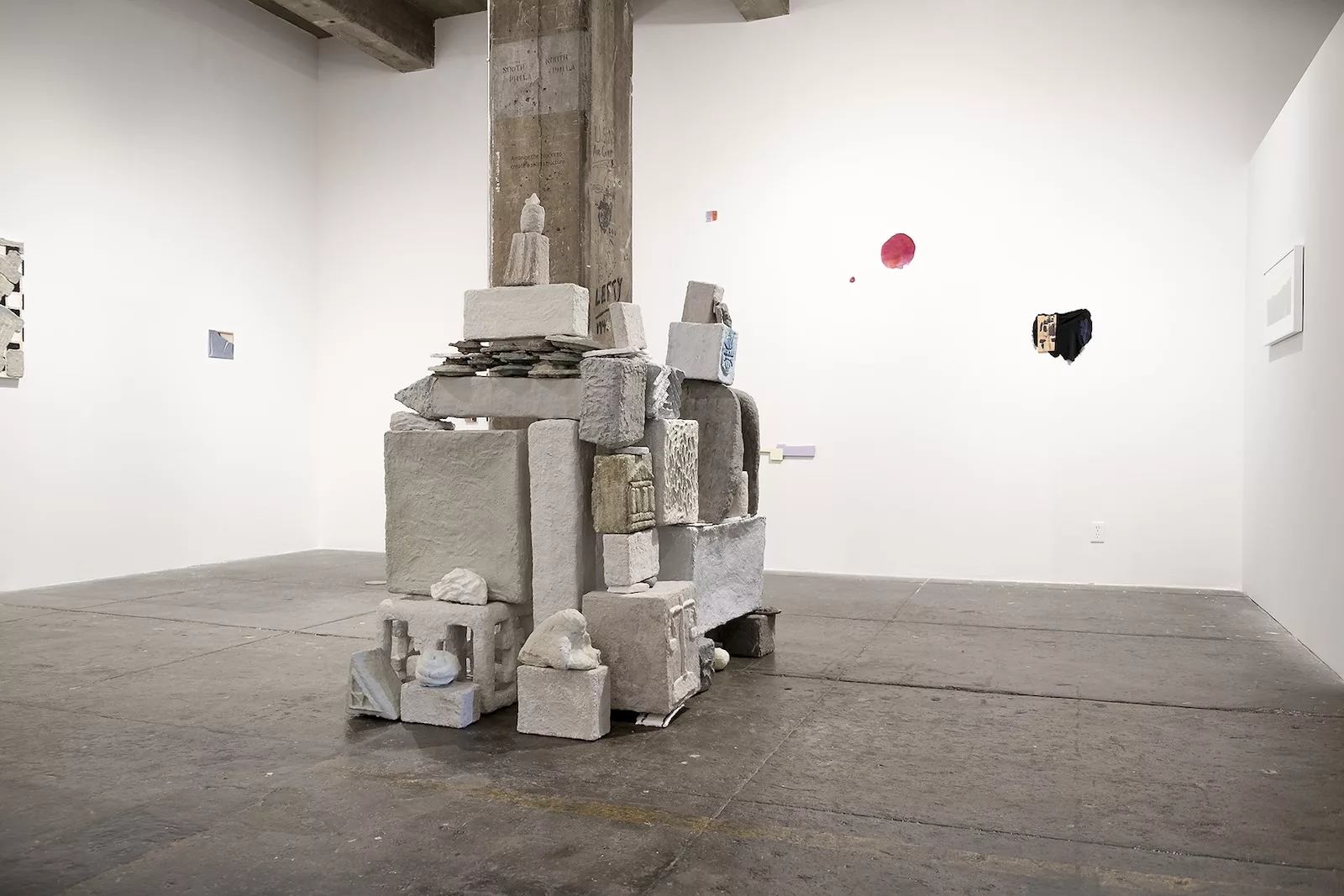
With the recent closure of University of the Arts and dissolution of Pennsylvania Academy of Fine Arts (PAFA) degree seeking programs, it’s a summer of uncertainty for many Philadelphia artists. Thus, it felt meaningful and even hopeful to see a group show at AUTOMAT featuring the work of five artists who have deep connections to the art community here.
Pathways presents work by Morgan Hobbs, Kate McCammon, Kate Moran, Eileen Neff and Kaitlin Pomerantz. The connection between the selected women and non-binary artists, beyond their contributions to the art scene, is their history with PAFA either as a guest critic, a long time faculty, or a staff member of the formerly robust institution. It is worth noting that AUTOMAT itself is the project of a group of alumni. I’ve known about this show for a few months now after multiple conversations with colleague and friend Addison Namnoum, a current member of AUTOMAT and organizer of the exhibition. She welcomed guest curator Melanie Delach to select the artists.
The show is weighty. I am struck by how much the work makes me think about weight. For instance, in Morgan Hobbs’s piece “Brick by Brick,” a group of what appear to be bricks, blocks, and various remnants piled against a pillar, I can imagine the monument that has since crumbled. What’s left are its ruins with an invitation from Hobbs to rearrange and rebuild a new structure. I had a lot of fun moving Hobbs’s surprisingly light faux concrete forms into new configurations and felt like I was inside a Philip Guston painting rearranging light bulbs and clunky painterly forms into new compositions and new possibilities.
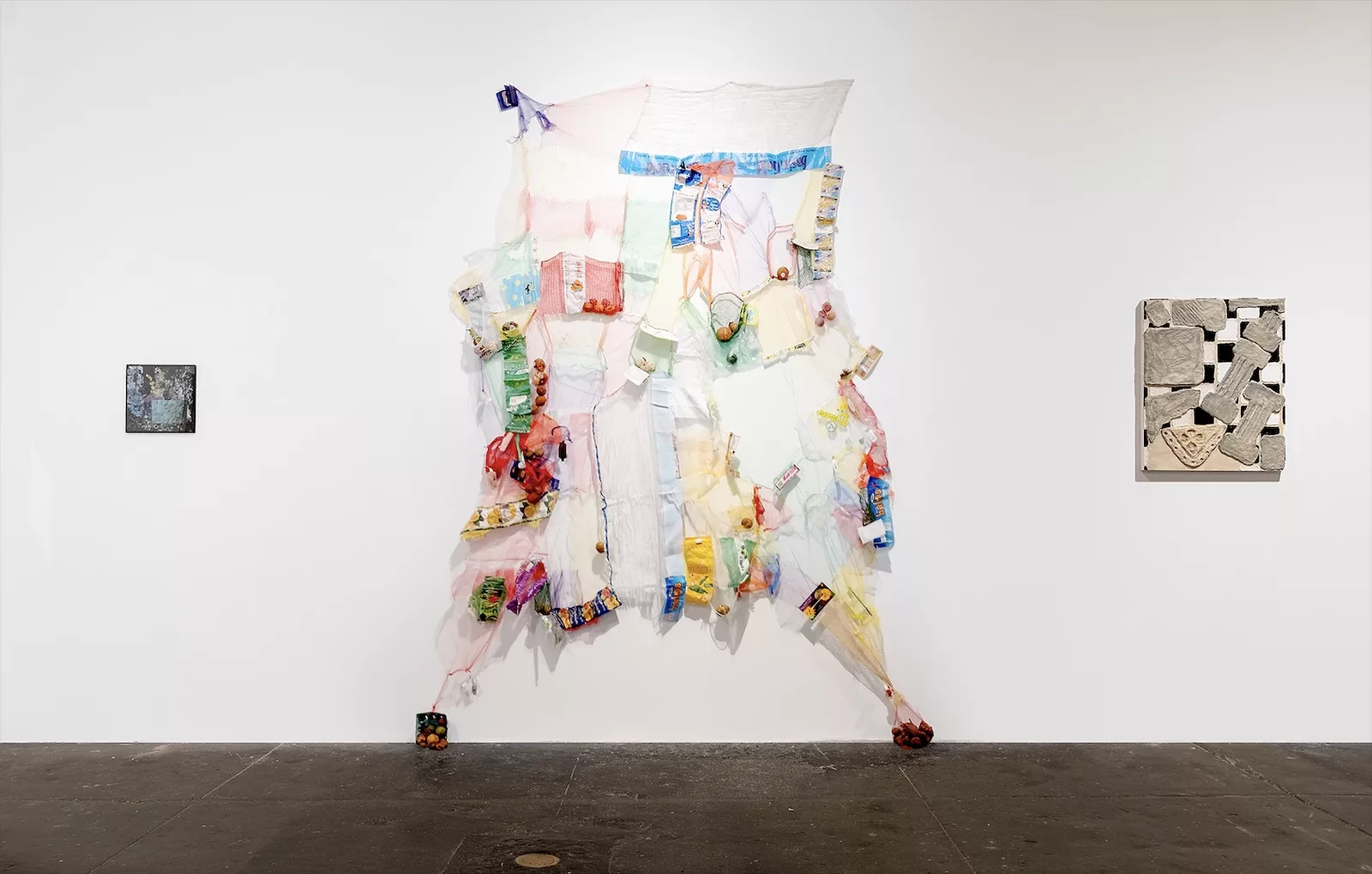
I’m reminded of weight again as I see the colorful stretched produce-netting of Kaitlin Pomerantz’s “…to fault a net for having holes.” I saw this piece last summer at Practice gallery in the 319 building, but found its new orientation particularly compelling. This time, the piece was stretched on the wall, quilt-like, animal skin-like, and dare I say painting-like. The two decaying bags of fruit anchor the piece and create the shape of a two-legged petrified produce beast. The materials are loaded with content about consumption, decay, and precarity.
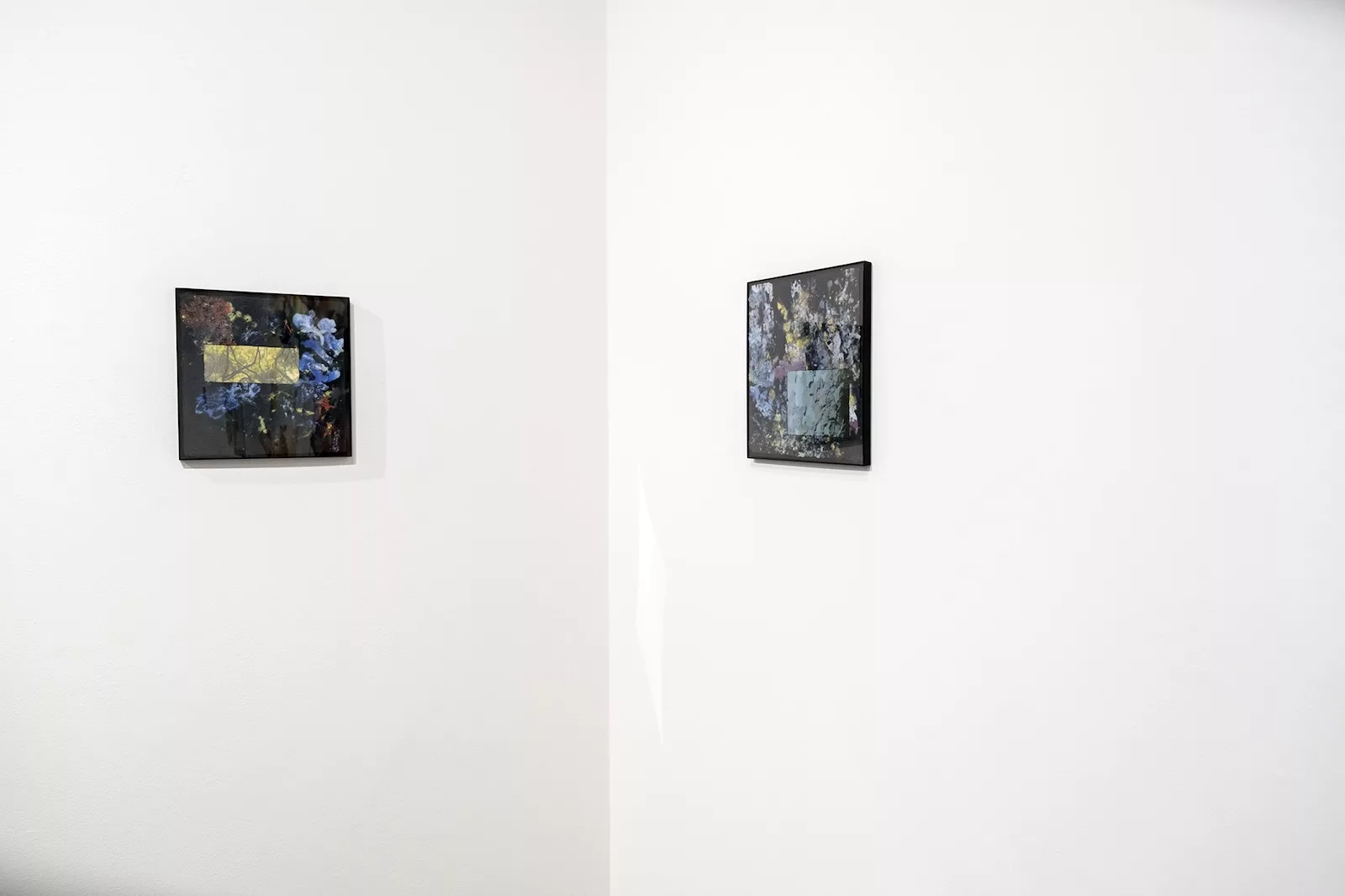
I found the scale shifts in the show disorienting at times, unsure about the relationship between my body and the objects and even the scenes I was entering. In Pomerantz’s collage works, “Slough” and “feckless (re)mediation,” composed of handmade paper and photographs, I had the experience of locating myself in an interior space created by the physicality and wallpaper quality of the handmade paper while looking through a window to the outside. However, the certainty of my position “inside” was complicated by the bits of ambiguous organic matter in the handmade paper, suggesting that I was already “outside.”
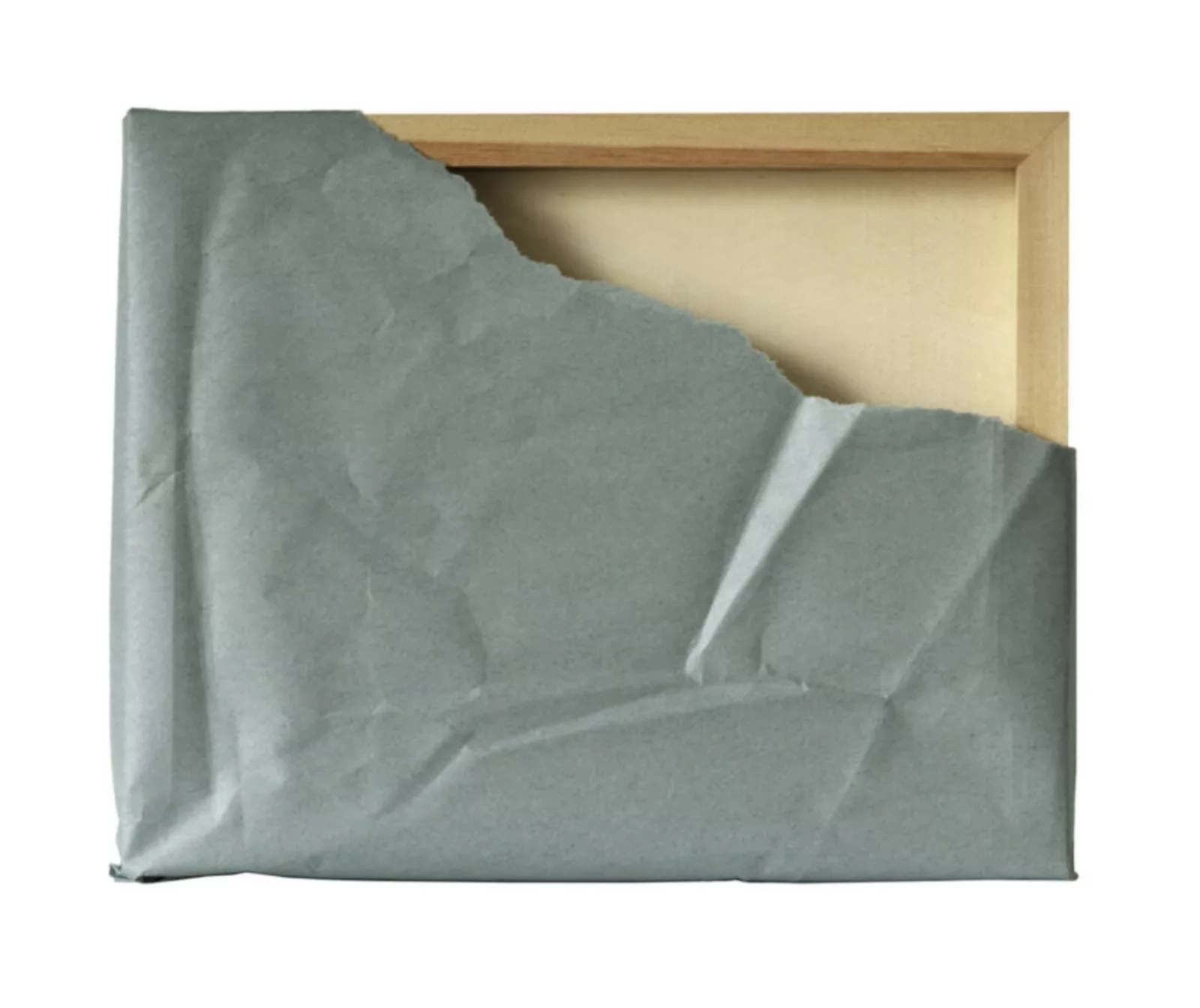
I had a similar experience looking at Eileen Neff’s photographs. They are quiet, tricky, and quite funny. What appears to be a subtle digital intervention in “Human Arrangement” makes me wonder if I’ve ever seen a pale yellow sky. Her piece “Remembering ‘The Poem That Took the Place of a Mountain,”’ surprised me. It’s a photograph of lightly creased paper attached to a wood frame that was then mounted on a thin piece of wood. Is it photography’s conversation with painting’s trompe-l’oeil? It’s a piece that must be seen in person. It makes me question what is a photograph of a shadow and what is a shadow from the art object itself. What if I reach in and peel back the paper? It’s an object and an image that possess both quietness in its muted color palette and the potential for a crinkle or tearing sound.
Next to Neff’s photo, Kate McCammon’s series “(35) Journal Portraits” features carefully constructed and sensitive photo collages created by sifting through her family’s ephemera. The small four inch by six inch canvases present silhouettes of one or two figures where small moments of handwriting collide with textures of hair, fabric, and skin.
Sharing the same wall, Kate Moran’s work is strikingly formal with narrow parameters: color and edge. The work reimagines painterly gestures through stained scraps of fabric and wood. I appreciate the exploration of material when addressing issues rooted in the language of painting. In her statement, she writes that the “current work is about presenting color as a singular subject.” Each of her pieces presents a pair, and at their meeting point, their formal relationship and difference is made explicit.
Pathways is a show with a lot to chew on in regards to making, form, and structure, but mostly I’m left thinking about community. Perhaps the disorientation I felt entering some of the works is analogous to what is felt in our city’s arts community right now. And like Hobbs’s piece poignantly illustrates, it’s the artists, the art collectives, and the art spaces that are left to reorient and rebuild.
‘Pathways’ AUTOMAT gallery is on view until July 27, 2024. The Crane Arts Building, 1400 N American St. The building is wheelchair accessible. Gallery hours are 12-5 Saturdays or by appointment.
Read other coverage of AUTOMAT on Artblog in Corey Qureshi’s review of ‘Present Tension,’ from Jan. 8, 2024.
Alicia Link is an artist and educator living and working in Philadelphia. She holds a BFA in Painting from Boston University and an MFA in Studio Art from the University of Texas at Austin. Her multidisciplinary work interrogates, critiques, and satirizes systems that restrict and limit agency and knowledge around our bodies. She currently teaches at Tyler School of Art and Architecture at Temple University and Fleisher Art Memorial. She views the classroom as a radical space for exchanging and investing in ideas while encouraging critical conversations about how art connects to broader political concerns.





